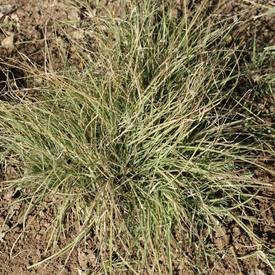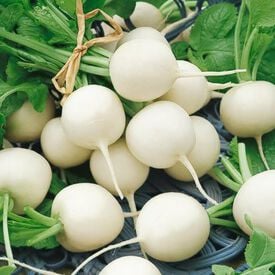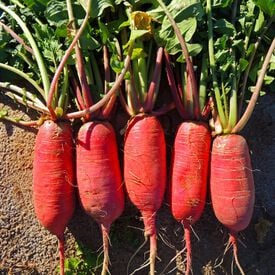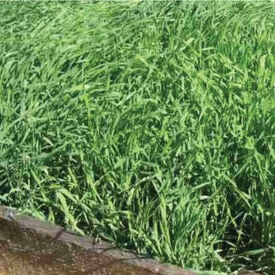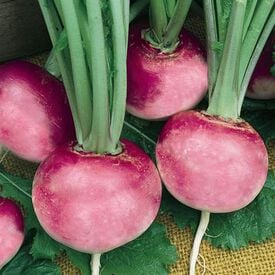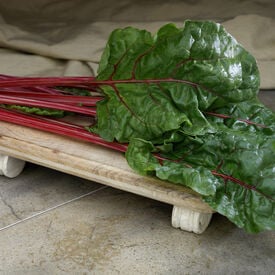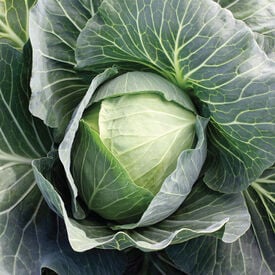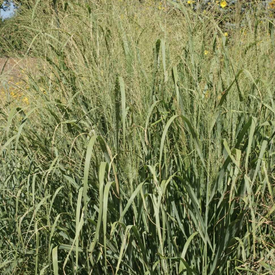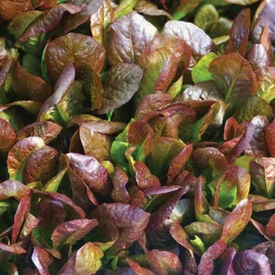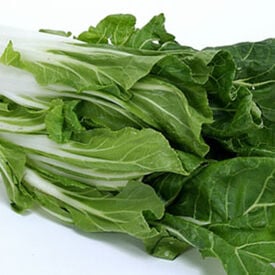The Buffalo Grass is a warm-season grass that is the predominant component of the shortgrass prairies of the Great Plains. Once established, it is extremely drought tolerant and tough. It can be used as a xeriscape lawn grass for water conservation, and it is a common component in range mixtures. White Tailed Deer, Bison and Prairie Dogs utilize it for forage, and it is a larval host for the Green Skipper. Plants are stoloniferous and can invade flower beds if an edging or barrier is not used.
The Hailstone Radish is a round white radish with a very crisp flesh that is a nice color contrast on relish trays and in salads. This quick growing radish is suitable to both spring and fall planting. Begin harvesting this radish variety when its nearly an inch across.
The Large White Ribbed Swiss Chard has a wide and flattened white stem. This variety is a popular heirloom chard that has tender and thick smooth leaves. The Large White Ribbed is very tasty and can even substitute asparagus when creamed.
China King is a miniature (baby) type of Chinese cabbage. Excellent for planting in close spacing as it has a compact frame. It has barrel-shaped heads with yellow interior color. Early maturing and slow to bolt.
The Lucullus Swiss Chard produces highly nutritious leaves from early spring until the first hard freeze in the fall. This variety produces great during the summer heat. This chard is a very popular variety grown throughout the United States.
The China Rose Radish is a tasty rose colored radish with peppery undertones. This long radish variety with 5 inch long roots is one of the oldest heirloom radishes around. The China Rose is a very hardy type that can be grown year round.
The Elbon Rye is a grain that is the best choice for fast, cool-season germination that prevents erosion and builds organic matter in the soil! Plant this variety early to late fall; in mild climates fall through early spring. This grain captures soil nutrients in the fall to release in spring when worked into the soil. The Elbon Rye can reach up to 5 feet! Cereal Rye (Secale cereale L.): Cool season, grass, Annual or perennial, Upright plant growth, Crude protein: straw 4%, grain 14%, C:N ratio: 40-48, Self pollinator (wind) Uses: Erosion Control, Green Manure, Nitrogen Scavenger, No Till, Organic Matter (Biomass), Weed suppression
Crunchy Royale is a dark red, round radish ideal for bunching or cello pack. It yields high quality and extremely uniform roots. Overall, Crunchy Royale offers excellent internal and external color and a high pack-out rate for growers.
The Piper Sudangrass is a great catch crop for excess nitrogen that produces heavy amounts of organic matter and suppresses weeds. This grass grows quickly at heights up to 7 feet. The Piper Sudangrass is great for livestock forage, but should be grazed only when mature and never after a frost as it turns toxic. Uses: Erosion Control, Green Manure, Nitrogen Scavenger, No Till, Organic Matter (Biomass), Weed Suppression
The Pink Beauty Radish is named after its beautiful, uniformed light pink exterior that is crisp and jam packed full of flavor. This round beauty has a bright white flesh that is crunchy and with the perfect radish taste. This quick-growing variety is a great addition to any garden! The Pink Beauty will add a nice pop of color to any garden or dish.
Fire Fresh hybrid swiss chard is excellent for baby leaf or spring mix production. Produces bright red petioles and medium-dark green leaves. Has an above normal growth rate and produces long oval leaves that have a slight texture.
SuperStar is a hybrid cabbage that produces the highest quality fresh market cabbages. It has excellent wrappers for a fancy pack along with excellent holding ability in the field and after harvest.
Switchgrass is a rhizomatous, warm-season bunchgrass that is native throughout most of the U.S. It is a major component of the Tallgrass Prairie ecosystem. Alamo originates from Live Oak County, Texas. It is late maturing and was developed as a renewable biofuel resource for the southern U.S. Recommended for pasture mixes, erosion control and soil stabilization. It also provides good nesting habitat, cover and food for many different types of wildlife.
The spicy flavor, attractive purple stems, and green leaves of the Hong Vit Radish makes it the perfect addition to any salad! This radish is a longtime favorite that is now available in organic form. A very fast growing microgreen! Grows straight and attractive purple stems that are hairless. Micro radish leaves add spicy flavor, visual appeal, and bulk to mixes.
The Red Velvet Lettuce produces very dark maroon to greenish-bronze tinged colored leaves that have a nice chewy texture. This beautifully unique variety is a great choice for mixed salad greens. This lettuce is slow to bolt and will become bitter in the heat.
The Cimarron is a very beautifully colored romaine lettuce! This tasty lettuce has bright green-red leaves that fade to deep red tips. This romaine type lettuce has good disease and bolt resistance. Cimarron is a favorite among gardeners for its beautiful hue and crispy texture in salad mixes!
China Express is a chinese cabbage that is a widely-adapted and can be grown throughout. This is a very uniform cabbage with tightly wrapped heads. Medium-sized that are fast maturing.
Fordhook Giant is a popular standard for many home gardens. This variety is one of best tasting Swiss Chards! The Fordhook Giant grows to be a dark glossy green color with a deeply savory leaf.
